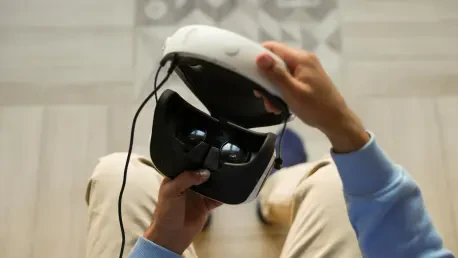In recent years, technological advancements within wearable devices have steadily progressed, particularly with the integration of Global Navigation Satellite System (GNSS) capabilities. Wearable technology, such as smartwatches and fitness trackers, has consistently faced the challenge of balancing accurate positioning with extended battery life. This challenge largely stems from the limited space available in these compact devices for large antennas and batteries. Addressing this issue has been paramount as users demand precise tracking regardless of environmental conditions, whether in urban landscapes, dense forests, or expansive open skies. To overcome these constraints, u-blox introduced LEAP (Low Energy Accurate Positioning), a transformative technology embedded within the u-blox M10 platform, promising a perfect balance between power consumption and accuracy.
The Balance of Precision and Efficiency
Optimizing Signal Handling and Power Usage
Traditionally, wearable devices experienced friction between precise tracking capabilities and the need for long battery life. LEAP technology revolutionizes this balance by employing selective signal handling, filtering only the strongest or most reliable GNSS signals while intelligently discarding low-elevation or weak signals. This strategic approach minimizes power drain while maintaining a high degree of accuracy. Multipath mitigation techniques are expertly utilized to counteract errors from reflected signals, often prevalent in urban and forested environments. This ensures users can rely on their wearables for an accurate and efficient tracking experience, irrespective of surrounding conditions. Moreover, LEAP’s smart GNSS mode incorporates an innovative feature—the automatic switching of the external low-noise amplifier (LNA). When robust signals are detected, the LNA reduces power consumption by shutting down, while it activates to bolster performance when signals weaken. This dynamic adjustment ensures an optimal balance between power efficiency and positioning accuracy without compromising device performance.
Activity-Aware Dynamics and Enhanced Capabilities
An essential aspect of LEAP technology is its activity-aware dynamics, wherein tailored motion models are employed to accommodate different physical activities such as running, hiking, and cycling. These models account for specific movement patterns and enable the system to make intelligent assumptions and corrections reflective of user behavior. This capability has already been validated through various sports activities, demonstrating remarkable improvements in GNSS performance. As more activities are integrated into LEAP’s repertoire, wearable technology continues to expand its utility and appeal. Comparatively, LEAP has shown impressive reductions in power consumption through comprehensive testing while matching or even surpassing accurate positioning capabilities. In forested environments, LEAP achieved a circular error probable (CEP95) of 8 meters, in contrast to competitors’ 14 meters, highlighting its superior accuracy. In open-sky conditions, it improved accuracy from 4 meters down to 2 meters, illustrating its potential in diverse environments.
Design and Compatibility Innovations
Compact Chip Solution and Firmware Flexibility
From a designer’s perspective, LEAP offers a unique opportunity to create slimmer, lighter devices without sacrificing performance or user experience. The compact chip package, measuring only 2.39 x 2.39 mm, enables wearables to adhere to stringent space and weight limitations, making it an ideal solution for rugged sports watches and everyday fitness trackers alike. Furthermore, LEAP supports firmware upgrades, paving the way for devices to adapt to new requirements and activities while leveraging advancements in power efficiency and positioning accuracy over time. This flexibility ensures wearables remain relevant and functional amid evolving user expectations and technological developments. Compatibility is another significant advantage, with LEAP integrating smoothly into existing connected ecosystems. It is compatible with Android systems and benefits from compatibility with the u-blox AssistNow service for faster positioning and reduced startup power. Additionally, LEAP adheres to standards such as SUPL, ensuring seamless incorporation into connected wearables without compromising functionality.
Real-world Application and User Empowerment
Overall, LEAP represents a pivotal technology that addresses one of the most persistent issues within wearable GNSS devices—the fusion of low power consumption and high accuracy. As a breakthrough advancement, LEAP empowers smartwatches and sports wearables to deliver superior user experiences characterized by extended usage, robust tracking capabilities, and enhanced convenience. This combination allows users to engage more freely in their activities with the confidence that their device is both reliably accurate and energy-efficient, transforming how wearables support active lifestyles. As wearable technology continues its evolution, LEAP sets a benchmark for performance, encouraging further innovation and refinement in the field. Through these explicit advances, users are afforded an unparalleled experience that aligns seamlessly with modern expectations for smart and efficient device functionality.
Future Potential and Considerations
Expansion and Adaptability in Emerging Markets
Looking forward, the implementation of LEAP opens exciting prospects for wearable GNSS technology, offering adaptability in emerging markets and fostering new possibilities for advanced applications. Innovations aimed at refining LEAP’s capabilities may extend its influence across various sectors, including healthcare monitoring, logistics, and geolocation-based services. This potential expansion may drive further advancements in GNSS techniques, establishing new standards and methods that enhance wearable device functionality. The ability to deliver consistent and precise geographical positioning amid fluctuating environmental conditions is likely to become increasingly relevant as wearables diversify their roles in our daily lives. By focusing on optimizations that conserve energy while ensuring accuracy, LEAP represents a promising avenue for developers and designers to explore—encouraging stakeholders to develop pioneering products that seamlessly integrate into connected ecosystems.
Continued Development and Integration
Wearable devices have historically faced challenges balancing accurate tracking with long battery life. LEAP technology transforms this by selectively handling signals from the Global Navigation Satellite System (GNSS). It filters out weaker or low-elevation signals, retaining only the strongest and most reliable, which minimizes battery consumption while enhancing precision. This smart filtering counters typical errors from reflected signals, common in cities and forests, ensuring accurate tracking regardless of surroundings. LEAP’s intelligent GNSS mode further refines this with a novel feature: automatic management of the external low-noise amplifier (LNA). When strong signals are present, the LNA conserves power by shutting down; however, it activates to boost performance when signals are weak. This adaptive function achieves the best balance between power efficiency and accurate positioning without sacrificing performance, providing users with a reliable and effective tracking tool in any environment.









